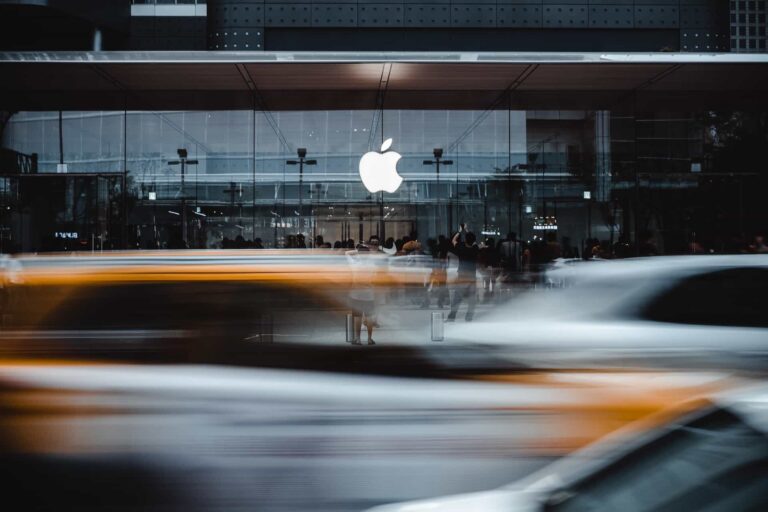
Apple products typically generate lots of buzz, and the company’s forthcoming extended reality (XR) headset is no exception. However, reports suggest the product will be pricey. Since Apple recently announced an offering that lets people pay for things in installments, might the company promote that option to make the XR headset’s purchase price more manageable? Here’s what’s known about this new Apple product to explore that possibility.
1. Apple Pay Later Was Just Introduced
The first official word about Apple Pay Later came on March 28, 2023, making it an extremely recent option for consumers. It allows people to split purchases into four segments and pay them off over six weeks. This is a zero-interest, no-fee payment plan, which should make it more attractive to people still on the fence about using it.
Apple Pay Later also extends to all merchants that accept Apple Pay, both online and in person, provided the consumer pays for the products on an iPad or iPhone. It’s easy to envision someone using it for a smaller purchase first. Then, if they like the experience and find it convenient, they’ll feel more confident about using it to buy Apple’s headset.
However, potential obstacles remain. Apple Pay Later is currently only open to randomly selected United States users who will access a prerelease version. The company will eventually roll it out to more people, but there’s no information about when that’ll happen.
Plus, people must use an iPad or iPhone to use this option. Therefore, it doesn’t cater to those curious about this particular Apple product but doesn’t already have at least one of the company’s leading items.
2. The Headset Could Be Several Thousand Dollars
Apple has not confirmed how much its XR headset will cost. However, sources suggest there may be two versions, with one of them being slightly more affordable. Even so, current estimates indicate people may pay $3,000 or more to own one, depending on their desired configurations.
The XR headset market contains more high-end products than other electronics segments. For example, Finland-headquartered Varjo sells an XR headset for $7,107, not including a required annual subscription that costs $1,636 more. VIVE has an XR headset costing significantly less, at $1,099, but people can buy a large assortment of accessories that would substantially increase the cost.
That suggests if you’re in the market for an XR headset, you know they’re fairly pricey. However, Apple executives presumably want to target more consumers with this product. They’re after those interested in almost anything the company sells or people who are slightly curious about XR and strongly trust Apple as a brand.
Apple Pay Later would help people spread the cost, but they’d still have to do it over six weeks. That’s not much time, especially for consumers who don’t already have money saved.
3. Insiders Don’t Think the Market Is Ready
The potential market for Apple’s XR headset spans beyond curious and tech-savvy consumers. There are undoubtedly some compelling reasons for companies to use the products, too. For example, the technology can allow someone to see through the eyes of a remote colleague, speeding up troubleshooting efforts and eliminating confusion.
Statistics show poor communication makes businesses lose $6 billion every year. If a decision-maker thought Apple’s headset could reduce that cost burden, suddenly spending a few thousand dollars per product might seem more feasible.
Consider another case where a logistics worker in California helped a colleague in New Jersey install a door edge guard on a car as they both wore XR headsets. Reports also indicate the headset will have 14 cameras for tracking body-part movements. That capability could expand the possible uses.
However, experts within and outside Apple reportedly doubt whether the headset will achieve the required marketplace traction. They point out that designers have had to create entirely new hardware for the headset. Moreover, the XR market as a whole is still emerging, and many view it as untested.
Company decision-makers typically like to see case studies and other evidence that investing in a newer technology will bring substantial payoffs. It’ll likely take a while before such information is easily accessible, especially if people want details of how Apple’s headset, in particular, helped businesses.
Consumers will likely be similarly hesitant. However, the sooner Apple starts releasing concrete details, the easier it will be for people to decide if the headset is worth the cost and has features relative to similar products already on the market.
Will Payment Plans Make Apple’s Headset More Appealing and Accessible?
Inflation has made people grapple with how to pay their bills and adjust to higher living costs. That means many consumers who may ordinarily be interested in Apple’s XR headset will have to hold off on pursuing it for now.
There are also so few confirmed details about the product that people may not want to put aside money to eventually buy it. Apple Pay Later could help some, such as those who usually must wait for a paycheck before splurging on a tech product. However, current details don’t position it as something that will make the masses ready, willing, and able to buy.
However, it’s too early to say anything for sure. After all, with its now-iconic iPod, Apple was the primary driver that forever changed how people consumed, stored, and purchased music. The company could do the same again with its XR headset, but all that’s left to do is wait and see.
 April Miller is a senior writer at ReHack Magazine and editorial contributor at AR Insider. She specializes in VR/AR, IoT, and business technology. See her work here and follow her @rehackmagazine.
April Miller is a senior writer at ReHack Magazine and editorial contributor at AR Insider. She specializes in VR/AR, IoT, and business technology. See her work here and follow her @rehackmagazine.
Header image credit: Andy Wang on Unsplash






